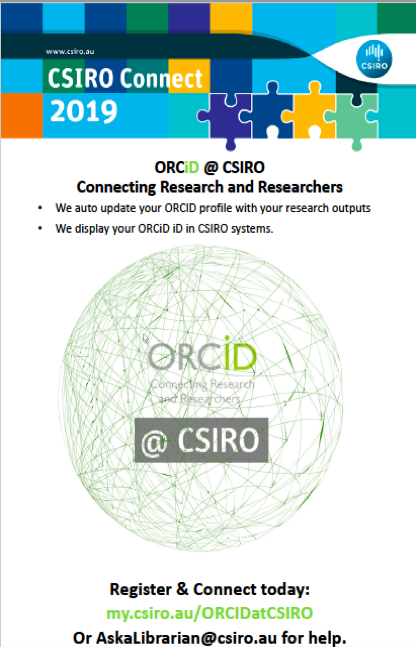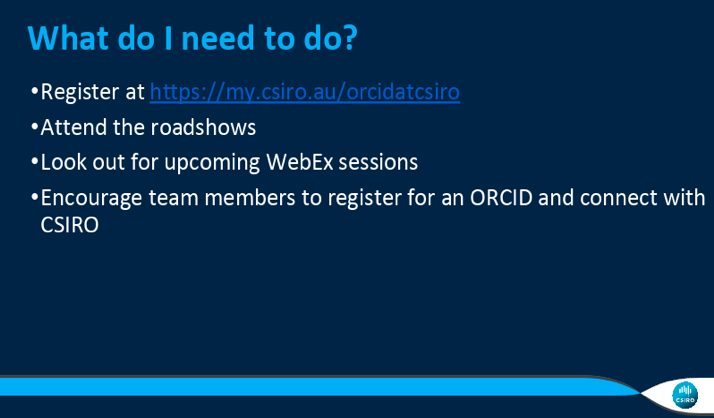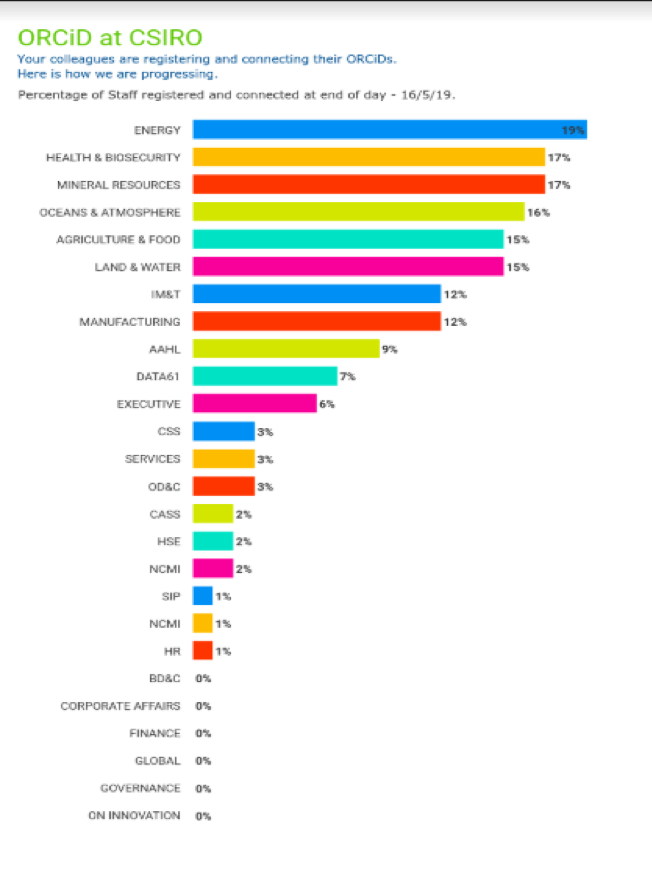A year before CSIRO joined ORCID we were a partner with Australian Research Data Commons (ARDC) (then known as the Australian National Data Service — ANDS). ARDC was a driving force behind the formation of the Australian ORCID Consortium. We were hearing from our researchers that publishers were asking authors to provide their ORCID iD, so those researchers wanted more information about ORCID. They were also requesting a single place where all their career outputs could be captured, as no internal system could manage this.
Helping Our Researchers
We knew that, once we joined ORCID, we wanted to start working on solving issues that were important to our researchers — their priorities were our priorities. We wanted to help promote their work, raise their visibility, and enable automated sharing of their content. Additional priorities were name disambiguation, tracking alumni, providing consistency in how CSIRO was represented in ORCID records, and supporting our researchers’ need to consolidate the broadest body of their works in a single location, their ORCID record.
Integration – A Team Effort
Developing our custom integration involved many different teams within CSIRO — Library, IT Applications, Web Services and Research Data Support — and impacted multiple systems. The integration used existing services to harvest from and feed into CSIRO’s HR system, where ORCID iDs and access tokens are stored, and to extract content from CSIRO’s companion repositories, the Research Publications Repository (RPR) and Data Access Portal (DAP). These services were expanded to capture ORCID iDs and display the ORCID icon alongside author/contributor names in those repositories. In addition, our researchers’ external and internal profile pages also include their ORCID iDs, as well as linking to the ORCID login to kick off the connect process when a researcher updates their profile.
Integrating with ORCID has also improved the quality of content in our repository by removing some duplicates, and we’ve seen Increased accessibility and visibility of CSIRO outputs.
While we can now see the benefits of the integration, it wasn’t without its challenges. CSIRO has around 5100 staff working across most science disciplines, distributed across 55 sites, and with a diverse range of communication channels. A single launch would not reach the widest possible audience. So it was an integration and launch that took collaboration and planning, however, we knew what we wanted to achieve and why, which helped.
Launch and Promotion of ORCID Integration
Successfully integrating and launching ORCID required dedication, determination and, admittedly, a fair amount of hair-pulling. We took an agile approach, with regular meetings of the cross-team partners, and testing and re-testing the integration in the sandbox, which provided a good outcome on the technical side, On the cultural/communications side, there was a staged launch, with events held on all our major sites, and some of the smaller sites. CSIRO’s Executive Sponsor participated in a video, which was released on launch, and is still available on the ORCID@CSIRO support page.
The launch itself required a coordinated effort across multiple sites too. Hands-on help with signing up for ORCID worked well, and we also used the following tools before and during the launch:
- Video featuring CSIRO’s Executive Sponsor on our intranet network
- Posters and handouts
- A slidedeck for building anticipation
- A roadshow at multiple CSIRO locations
- Swag! ORCID @ CSIRO branded objects, such as a mobile phone charger, pens, and cupcakes and cookies at an event
- Internal wiki content and intranet news updates, such as the dashboard (last image below) showing ORCID registrations via CSIRO by department
Since our integration launched in February 2019, over 1,100 of 5,100* total employees have registered — not all of whom are researchers — with continued steady growth. Support for ORCID is shared between individual CSIRO units and our Library outreach staff.
Our advice for other members is to meet with another organization that already integrated ORCID. For us, meeting with the University of Adelaide was beneficial to both our development and roll out phases. And, despite the challenges, all things considered, integrating with ORCID was easy.
Below are some of the outreach resources and materials used to promote ORCID with researchers.




*Edited: Previously read 8500 total employees and corrected to read 5100 total employees
